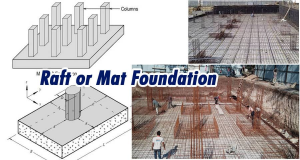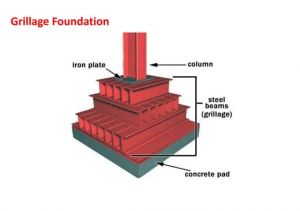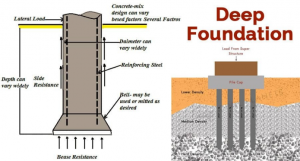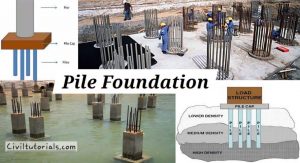Introduction
Every sturdy building begins from the ground up — literally. The foundation of a home is the base that transfers the load of the entire structure to the earth. Whether you’re a homebuyer, real estate investor, or aspiring homeowner, knowing about different types of foundations in building construction can help you make informed decisions.
Understanding what are the types of foundation is also critical for architects, civil engineers, and contractors. A poor foundation can result in serious structural issues, while a strong one ensures safety, durability, and longevity. In this comprehensive blog, we will explore all types of home foundations in-depth, including technical distinctions, practical use cases, advantages, disadvantages, and more.
Also Read:- Shweta Tripathi Buys Chic 3 BHK in Chembur’s Supreme Boulevard for ₹3 Crore
What is a Foundation in Construction?
A foundation in construction is the structural component of a building that transfers its load to the soil beneath. It is the base upon which the entire structure rests, offering support, alignment, and resistance to external factors such as ground movement, moisture, and seismic activity.
Foundations are designed based on several factors, such as:
- Soil type
- Load-bearing capacity
- Water table level
- Budget
- Local climate and seismic zones
- Type and height of the building
There are two main categories of foundations: Shallow Foundations and Deep Foundations. Each category branches into various types, which we will explore below.
How Many Types of Foundation Are There?

Foundations can be broadly classified into two major categories:
- Shallow Foundations
- Deep Foundations
Under these categories, there are multiple subtypes depending on the design and use case. The following sections explain types of foundation in construction with diagram-based explanations and use cases.
Also Read:- How to Apply for a Property Mutation Certificate in Maharashtra in 2025?
What Are Shallow Foundations?

Shallow foundations are those that transfer building loads to the earth very near to the surface. They are economical and easier to construct when the soil has sufficient bearing capacity at a shallow depth. Shallow foundations are typically used for low-rise buildings and residential homes.
Subtypes of Shallow Foundations include:
- Strip Foundations
- Pad Foundations
- Raft or Mat Foundations
- Combined Footing Foundations
- Grillage Foundations
Also Read:- Trespassing Laws in India 2025: Rules, Penalties, Posting Signs and Many More
What Are Strip Foundations?

Strip foundations (or strip footings) are continuous strips of concrete that support load-bearing walls. They are ideal when the load is linear and evenly distributed.
Best suited for:
- Small to medium-sized residential structures
- Walls with continuous load
Advantages:
- Cost-effective for uniform soil
- Easy to construct
Disadvantages:
- Not suitable for poor soil conditions
What Are Pad Foundations?
Pad foundations are isolated square or rectangular blocks of concrete used to support individual columns or pillars.
Best suited for:
- Buildings with point loads from columns
Advantages:
- Simple and economical
- Requires less excavation
Disadvantages:
- Not ideal for heavy loads or poor soil
Also Read:- What are the New Construction Rules in Maharashtra?
What Are Raft or Mat Foundations?

Raft (or mat) foundations spread the entire load of the building over a large area, usually the entire building footprint. This foundation type acts like a “raft” floating on the ground.
Best suited for:
- Weak or highly compressible soils
- Basements
- High-rise buildings
Advantages:
- Distributes loads evenly
- Minimizes differential settlement
Disadvantages:
- Expensive
- Requires skilled labor
What Are Combined Footing Foundations?

Combined footings are used when two or more columns are close together, and their individual footings would overlap. It combines them into a single foundation slab.
Best suited for:
- Columns placed close due to property lines or design constraints
Advantages:
- Efficient land use
- Reduces construction complexity
Disadvantages:
- Requires precise engineering
Also Read:- Farm House Construction Rules in Maharashtra in 2025-26
What Are Grillage Foundations?

Grillage foundations use steel beams arranged in layers (grillage) to support heavy loads over weak soils. These foundations are encased in concrete for protection.
Best suited for:
- Heavy industrial structures
- Machine foundations
Advantages:
- Excellent load distribution
- Allows use in weak soils
Disadvantages:
- Expensive and complex
What Are Deep Foundations?

Deep foundations transfer loads to deeper soil layers with better bearing capacity. These are used when surface soils are too weak to support the structure.
Subtypes of Deep Foundations include:
- Pile Foundations
- Floating Foundation
What Are Pile Foundations?

Pile foundations consist of long, slender columns made of steel, concrete, or timber, driven deep into the ground to transfer load.
Types of Piles:
- End-bearing piles
- Friction piles
- Bored piles
- Driven piles
Best suited for:
- High-rise buildings
- Coastal areas
- Areas with water-logged or loose soil
Advantages:
- Penetrates through weak soil
- Withstands high loads
Disadvantages:
- Expensive
- Noisy and requires special equipment
What Is a Floating Foundation?

A floating foundation (or compensated foundation) balances the weight of excavated soil with the weight of the building. The net pressure on the soil remains unchanged.
Best suited for:
- Weak soils
- Structures like basements or underground stations
Advantages:
- Prevents excessive settlement
- Useful in soft clays
Disadvantages:
- Requires extensive calculation
- Can be costly
Types of Foundation in Construction With Diagram (Overview Table)
| Foundation Type | Category | Suitable For | Key Feature |
| Strip Foundation | Shallow | Load-bearing walls | Continuous concrete strip |
| Pad Foundation | Shallow | Individual columns | Isolated square pad |
| Raft or Mat Foundation | Shallow | Weak soil, large areas | Full ground coverage |
| Combined Footing | Shallow | Closely spaced columns | Shared concrete slab |
| Grillage Foundation | Shallow | Heavy structures | Steel beams + concrete |
| Pile Foundation | Deep | Weak soil, high load | Long columns driven deep |
| Floating Foundation | Deep | Soft soils, underground structures | Weight-balanced design |
How to Choose the Right Foundation?
Choosing the right foundation depends on:
- Soil condition: Weak or sandy soils require deep foundations.
- Load-bearing capacity: High-rise structures need robust foundations like piles or rafts.
- Water table: Areas with high water tables need waterproofing or deep foundations.
- Budget: Shallow foundations are less expensive than deep foundations.
- Site constraints: Space and proximity to property lines may influence foundation type.
Why Is It Important to Understand the Types of Foundation in Building Construction?
Understanding foundation types helps you:
- Make informed real estate decisions
- Plan construction budgets effectively
- Ensure long-term safety of the building
- Avoid legal and structural complications
Whether you’re constructing a bungalow or a skyscraper, the right foundation is crucial.
Conclusion
Foundations are not just concrete blocks beneath your home—they are critical systems that ensure your structure remains stable, strong, and durable. From Shallow Foundations like strip and pad to Deep Foundations like piles and floating systems, every type serves a specific need based on soil, structure, and load requirements.
At Housiey, we believe every homebuyer should be empowered with knowledge about the home they invest in—starting from the ground up.
If you found this guide insightful, we urge you to check out our detailed blog on “Construction Quality: What Every Homebuyer Must Know” for your next steps in real estate decision-making.







